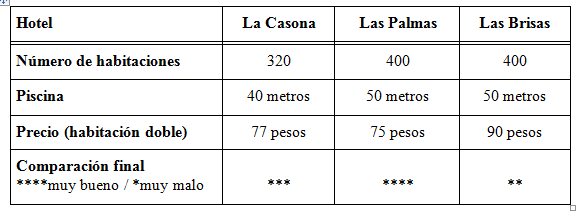En las ciudades los hombres encuentran trabajo más fácilmente que las mujeres.
What will be an ideal response?
En las ciudades las mujeres encuentran trabajo más fácilmente que los hombres.
You might also like to view...
Perhaps the most important difference in life chances involves life itself. In 1992, men in the United States could expect to live 72.3 years and women 79.1 years. On the average, then, women live seven years longer than men. Although part of this difference is probably biological, the social contribution to differential life expectancy begins at a very early age and continues through the life
course. At high school and college ages, males are nearly three times more likely then females to die. To a significant extent, this difference has to do with the more dangerous lifestyle (particularly drinking and driving) associated with masculinity in our culture. The sex differential in life expectancy is more complex than the greater risk taking of young men, however. Even at the earlier ages just mentioned, men are more likely than women to die of cancer or heart disease. Consider men's disadvantage in heart disease, for example. Evidence suggests that men have this disadvantage not because they experience more stress than women but because, under the same levels of stress, they are more vulnerable to heart disease than women. Current thinking attributes men's greater risk of heart disease at least partly to the male gender role's low emphasis on nurturance and emotional relationships. Where women's personalities and relationship characteristics seem to protect them from this consequence of stress, lack of social support appears to leave men especially vulnerable to stress-related diseases. This suggests that, despite increasing female participation in politics and the labor force, women's life expectancy will continue to remain substantially higher than men's. The sex differential in mortality is likely to decline only when differences in personality and dispositions are reduced From this passage, you can infer that a. long life is promoted by strong family ties and friendships. b. biological differences in men and women have little effect on life spans. c. if women work harder than men, their life spans will soon decrease. d. men's relationships often promote good health.
For each of the following items, choose the correct answer
Essay questions are called a. terms. b. responses. c. modes. d. prompts.
Look at the following chart and write sentences comparing three hotels. Remember to use más/menos... que, tan/tantos... como, etc., when comparing two things, and the superlative when comparing three or more things.

1. Número de habitaciones: La Casona/ Las Palmas
El hotel La Casona
2. Número de habitaciones: Las Brisas/ Las Palmas
3. Precio: La Casona / Las Palmas
4. Piscina: Las Palmas /Las Brisas
5. Precio: Las Palmas / La Casona / Las Brisas
6. Comparación final: Las Palmas / La Casona / Las Brisas
VOCABULARIO. Relaciones y emociones. Lee las siguientes oraciones y elige la emoción de cada persona según la descripción.
____ 1. Juan quiere invitar a salir a la chica que le gusta mucho. Se siente ______. a. deprimido b. comprometido c. nervioso ____ 2. A Sara le gusta su compañero de clase, pero no sabe si él siente lo mismo. Ella está _____. a. sorprendida b. insegura c. desilusionada ____ 3. José se siente ______ porque su novia le dijo que está aburrida en su relación. a. preocupado b. apasionado c. ensimismado ____ 4. Lupe está ______ con su novio. Van a casarse este verano. a. afligida b. comprometida c. determinada ____5. Nina está ______ de la deshonestidad en su relación y ha decidido (has decided to) romper con su novio. a. harta b. incompatible c. fiel ____6. Felipe se siente ______ porque vio a su novia hablar con otro hombre. a. contento b. apasionado c. celoso ____7. Ana no sabía que Alberto y Rita empezaron a salir juntos. Está ______. a. sorprendida b. confundida c. incompatible ____ 8. Cuando su marido no está en casa, Alondra se siente sola y triste. Pasa mucho tiempo durmiendo. Ella está muy ______. a. infiel b. deprimida c. sorprendida